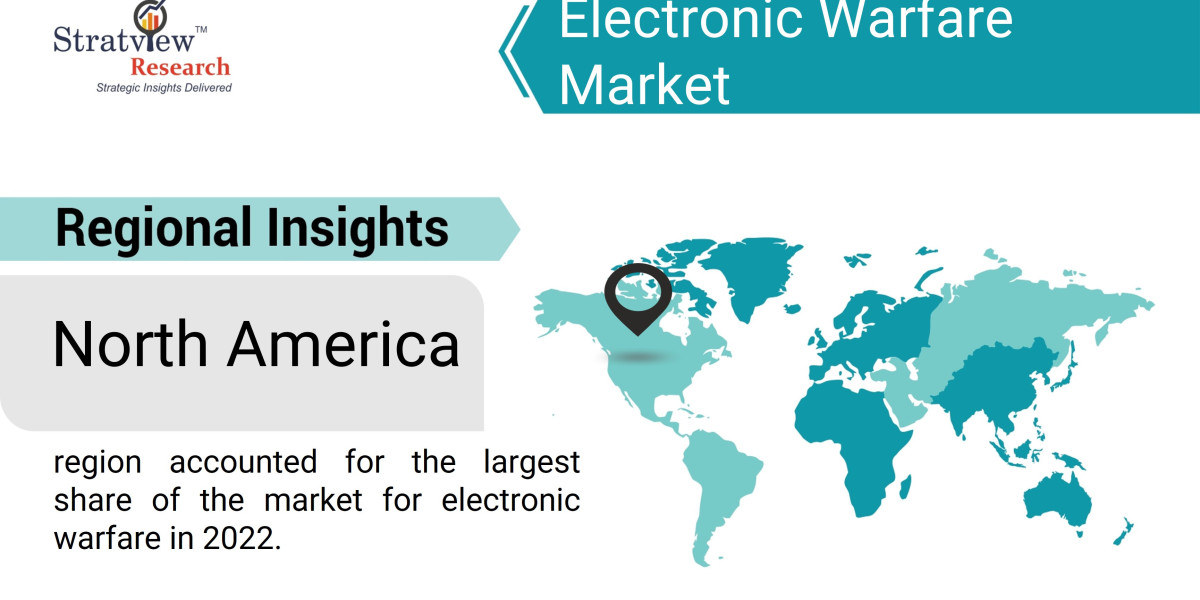The electronic warfare market is undergoing significant transformation as nations around the globe prioritize defense modernization and technology advancements. As the landscape of warfare evolves, electronic warfare has emerged as a critical component in military strategy, leveraging the electromagnetic spectrum to control, disrupt, and protect. This article explores key trends shaping the future of the electronic warfare market and their implications for global defense strategies.
According to Stratview Research, the electronic warfare market was estimated at USD 18.44 billion in 2022 and is likely to grow at a CAGR of 4.66% during 2023-2028 to reach USD 24.32 billion in 2028.
- Integration of Artificial Intelligence (AI) and Machine Learning (ML)
One of the most transformative trends in the electronic warfare market is the integration of AI and ML. These technologies enhance the capability to process vast amounts of data quickly and accurately, allowing for real-time threat detection and response. AI and ML algorithms can identify patterns and anomalies in the electromagnetic spectrum, enabling more effective electronic support measures (ESM) and electronic countermeasures (ECM). This integration not only improves situational awareness but also enhances decision-making processes in complex and dynamic environments.
- Cyber-Electronic Warfare Convergence
The convergence of cyber and electronic warfare is another significant trend. As cyber threats become more sophisticated, the ability to integrate cyber operations with traditional EW capabilities is crucial. This convergence allows for a more comprehensive approach to defense, where cyber tools can be used to disrupt enemy communications and electronic systems, while EW can protect against cyber intrusions. This synergy enhances the overall effectiveness of military operations and provides a multi-layered defense strategy.
- Advancements in Electronic Warfare Systems
Technological advancements in electronic warfare systems are driving market growth. Modern EW systems are becoming more compact, powerful, and versatile, capable of being integrated into various platforms, including unmanned systems, aircraft, and naval vessels. These advancements are not only improving the effectiveness of electronic warfare operations but also expanding their applicability across different branches of the military. The development of advanced radar and communication jamming systems, as well as directed energy weapons, are prime examples of this trend.
- Focus on Electronic Protection
As electronic warfare capabilities become more advanced, so does the need for robust electronic protection measures. Ensuring the resilience and security of one's own electronic systems against enemy electronic warfare attacks is paramount. This focus on electronic protection includes the development of technologies that can detect and mitigate jamming, spoofing, and other forms of electronic interference. Enhanced electronic protection capabilities are essential for maintaining operational integrity and effectiveness in contested environments.
- Increased Investment in R&D
Governments and defense organizations worldwide are increasing their investment in research and development (R&D) for electronic warfare technologies. This investment is driving innovation and the development of next-generation electronic warfare capabilities. Countries are recognizing the strategic importance of maintaining a technological edge in electronic warfare, leading to substantial funding for advanced projects and collaborations with private sector companies and academic institutions.
Conclusion
The electronic warfare market is poised for significant growth and innovation as nations prioritize defense modernization and technological advancements. The integration of AI and ML, the convergence of cyber and electronic warfare, advancements in electronic warfare systems, a focus on electronic protection, and increased investment in R&D are key trends shaping the future of this market. As these trends continue to evolve, they will play a critical role in enhancing the capabilities and effectiveness of military operations worldwide, ensuring that nations can navigate the future of warfare with greater agility and resilience.



